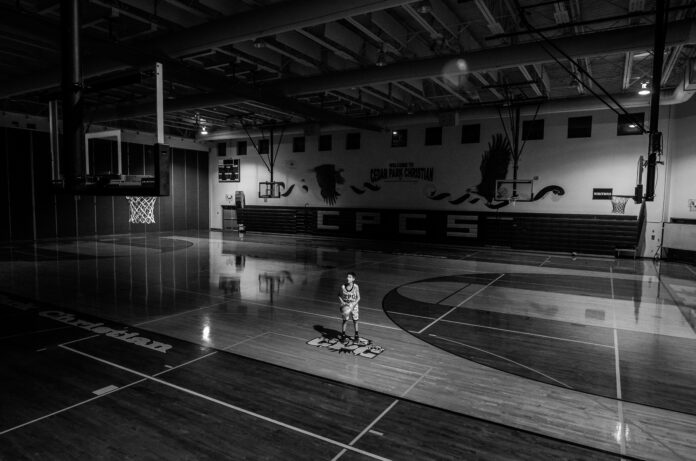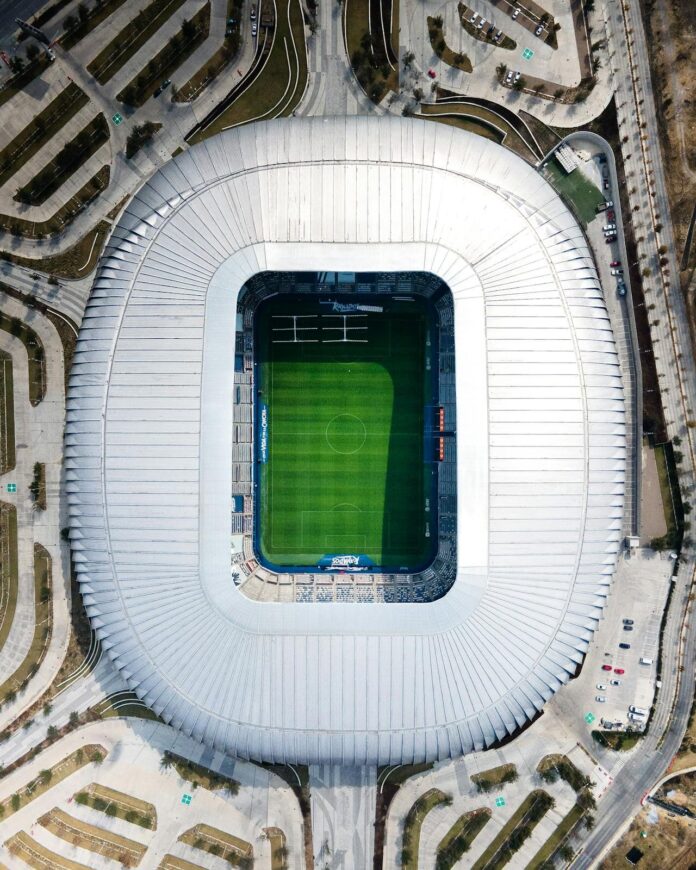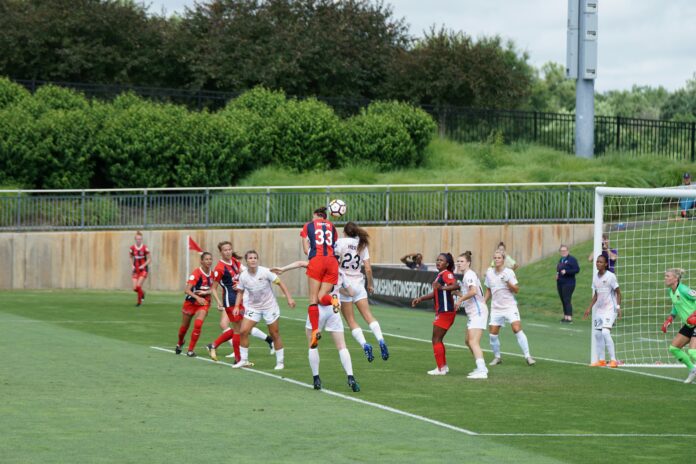Introduction
Le 22 mai 2024, la prochaine cohorte de candidats passera la troisième édition de l’examen des agents de football de la FIFA depuis sa réintroduction en 2023. Dans le cadre de nos cours sur la manière de réussir l’examen et comme guide supplémentaire pour devenir agent de football, nous avons décidé de créer plusieurs blogs sous forme d’examens pratiques simulés pour vous aider à vous préparer en testant vos connaissances et en répondant à certaines questions dans le même style que le vrai examen.
Avant de tenter cet examen simulé, nous vous recommandons également de lire nos dix meilleurs conseils pour réussir l’examen des agents de football de la FIFA et d’appliquer certains de ces conseils clés, tels que vous assurer de bien lire les questions et utiliser le processus d’élimination si vous ne connaissez pas immédiatement la réponse. Vous devriez également avoir fait une lecture substantielle des documents d’étude et avoir passé du temps à apprendre, en particulier à comprendre les sujets les plus essentiels. Vous remarquerez que les hyperliens sur certaines des questions de cet examen simulé vous renverront à d’autres ressources utiles sur les sujets abordés. Si vous êtes bloqué, ces ressources devraient vous aider !
Examen simulé
- À la suite d’un match qui s’est déroulé dans le contexte de la Coupe du monde des clubs de la FIFA™, l’arbitre rapporte officiellement que Players FC se sont vu attribuer sept cartons jaunes répartis sur six de leurs joueurs. Players FC craignent de faire l’objet de mesures disciplinaires potentielles. Quelle affirmation est correcte ? Sélectionnez-en une :
1.a. Comme les joueurs de Players FC n’ont jamais reçu de cartons jaunes auparavant dans la compétition, le club ne sera pas soumis à des mesures disciplinaires à cet égard.
2.b. Seuls les joueurs eux-mêmes peuvent faire l’objet de mesures disciplinaires concernant les cartons jaunes reçus pendant le match.
3.c. Players FC peuvent faire l’objet de mesures disciplinaires pour mauvaise conduite en raison des sanctions disciplinaires individuelles imposées par l’arbitre à leurs joueurs.
4.d. Players FC n’auraient été soumis à des mesures disciplinaires que si l’arbitre avait imposé des sanctions disciplinaires à sept joueurs ou plus.
- Lauren est une entraîneuse de jeunes dans un club et a identifié Lily, une joueuse de 15 ans avec un grand potentiel. Avec autant d’agents de football suivant les matchs de Lily, Lauren craint d’être contactée par des personnes cherchant à tirer profit de son talent sans suivre les réglementations FIFA nécessaires. Un matin, Lauren entend par hasard Rickie, un journaliste local, et un célèbre agent de football, Jordan, offrant à Lily une représentation et un essai à l’étranger. Perturbée par ce qu’elle avait entendu, Lauren appelle les parents de Lily pour les informer de la situation. De quoi Lauren devrait-elle avertir les parents de Lily ? Sélectionnez une ou plusieurs réponses :
1.a. En tant que mineure, Lily ne peut pas signer de contrat professionnel selon les réglementations de la FIFA et ne peut donc pas engager une personne fournissant des services d’agent de football.
2.b. Lily ne peut être représentée que par Lauren, puisqu’elle est son entraîneuse, et non par Rickie ou Jordan.
3.c. Jordan a abordé Lily sans contacter d’abord ses parents.
4.d. Rickie n’est pas un agent de football et ne peut pas représenter Lily.
3.Qu’est-ce que la compensation de transfert selon les Règlements de la FIFA sur le statut et le transfert des joueurs ? Sélectionnez-en une :
1.a. Compensation pour rupture de contrat.
2.b. Compensation versée par le nouveau club d’un joueur à son ancien club, indépendamment de l’acceptation de l’ancien club de libérer le joueur d’une relation contractuelle contraignante.
3.c. Compensation pour formation et mécanisme de solidarité.
4.d. Compensation versée par le nouveau club d’un joueur à son ancien club, en échange de l’acceptation de l’ancien club de libérer le joueur d’une relation contractuelle contraignante.
4.Dans quelles zones les clubs et associations hôtes sont-ils responsables de l’ordre et de la sécurité ? Sélectionnez-en une :
1.a. Aucune des réponses répertoriées.
2.b. Sur les forums en ligne et les pages de médias sociaux appartenant aux fans avant les matchs.
3.c. Dans et autour du stade avant, pendant et après les matchs.
4.d. Aux aéroports, aux gares routières et ferroviaires avant et après les matchs, quel que soit leur emplacement.
5.Tania est une femme d’affaires prospère qui a identifié un besoin d’une académie de football privée locale dans sa ville. Après avoir procédé à son plan d’affaires et créé Youthful Academy, son succès attire rapidement l’attention de l’AFC Adults, les champions nationaux de la Pangée. Le propriétaire de l’AFC Adults propose à Tania un partenariat selon lequel Youthful Academy sera affiliée au club et jouera dans la ligue de jeunes de la Pangée, Tania recevant en retour une participation de 5 % dans le club. Après plus de succès, Tania décide de demander une licence d’agent de football mais est rejetée par la FIFA. Pourquoi est-elle rejetée ? Sélectionnez une ou plusieurs réponses :
1.a. Youthful Academy est affiliée à l’AFC Adults, un club affilié à la FA de la Pangée.
2.b. Tania a un intérêt dans Youthful Academy.
3.c. Tania n’a pas demandé la permission préalable de la FIFA pour exploiter une académie.
4.d. Tania a un intérêt dans l’AFC Adults.
6.Que peut faire une partie lorsqu’elle reçoit une notification du secrétariat général de la FIFA d’un passeport électronique de joueur (EPP) final ? Sélectionnez une ou plusieurs réponses :
1.a. Aucune des réponses répertoriées.
2.b. Faire appel du passeport électronique final devant le Tribunal arbitral du sport.
3.c. Faire appel du passeport électronique final devant la Commission d’appel de la FIFA.
4.d. Considérer que les informations d’inscription contenues dans le premier passeport électronique final d’un joueur seront, en principe, contraignantes pour tout passeport électronique final futur.
7.Rory est un joueur amateur de 19 ans qui joue pour le FC North depuis trois saisons. Il a auparavant joué pour le FC West et le FC East. Son agent est en discussion avec le FC South, un club de formation de catégorie 1, qui souhaiterait offrir à Rory un contrat professionnel. Cependant, le FC South aimerait éviter de payer une compensation de formation, car il rencontre des difficultés financières. Quelle(s) solution(s) parmi les suivantes est/sont autorisée(s) selon les règlements de la FIFA ? Sélectionnez une ou plusieurs réponses :
1.a. Rory pourrait signer son premier contrat professionnel avec le FC Central, un club de formation de catégorie 4, afin que le FC South n’ait pas à payer de compensation de formation et puisse donc lui offrir un salaire plus élevé.
2.b. Le FC South pourrait parvenir à un accord avec le FC North, le FC East et le FC West, par le biais duquel ces trois clubs renonceraient à tout droit à une compensation de formation en échange d’une prime de transfert à payer en cas de transfert futur de Rory.
3.c. Rory pourrait signer son premier contrat professionnel avec le FC Compass, qui peut se permettre de payer la compensation de formation, même s’ils lui offrent un salaire moins élevé.
4.d. Le FC South pourrait demander un prêt bancaire à rembourser sur dix ans, en utilisant tout revenu généré dans le cadre des droits de diffusion du FC South comme garantie.
8.Le 1er juillet 2023, un joueur de 18 ans est transféré à l’international en tant que joueur sans contrat. Le nouveau club du joueur, AFC Black, est classé comme un club de catégorie 4, et par conséquent, aucun déclencheur de récompense de formation n’a été identifié car aucune compensation de formation n’est due lorsque qu’un joueur s’inscrit dans un club de catégorie 4. Que peut faire un club de formation affilié à une association différente de celle de l’AFC Black selon l’article 18 paragraphe 2 des Règlements de la FIFA sur la compensation de formation s’il estime avoir droit à une compensation de formation ? Sélectionnez une réponse :
1.a. Demander à l’association membre de l’AFC Black de changer la catégorie de l’AFC Black.
2.b. Déposer une réclamation dans TMS.
3.c. Déposer une réclamation dans le Portail juridique de la FIFA.
4.d. Déposer un appel devant le Tribunal arbitral du sport.
9.Justin, un footballeur professionnel établi, est mécontent de son manque de temps de jeu avec son club pendant la saison. Il envisage de résilier son contrat avec le club pour justes motifs sportifs. Le club dispute 30 matchs pendant la saison. Dans lequel des scénarios suivants aurait-il des motifs de résilier son contrat prématurément ? Sélectionnez une réponse :
1.a. Il est apparu dans seulement deux matchs.
2.b. Il est apparu dans seulement sept matchs.
3.c. Il est apparu dans seulement trois matchs.
4.d. Il est apparu dans seulement cinq matchs.
10.Laquelle des affirmations suivantes est correcte concernant les transferts de pont ? Sélectionnez une réponse :
1.a. Les clubs peuvent engager un joueur par le biais d’un club de formation de catégorie 4 tant qu’ils ne reçoivent aucun paiement.
2.b. Les clubs devraient utiliser un club de formation de catégorie 4 pour éviter le paiement d’une compensation de formation.
3.c. Les clubs ne devraient jamais engager un joueur qui a déjà été transféré dans les 16 semaines précédentes.
4.d. Les clubs ne devraient pas conclure d’accord impliquant un joueur transféré deux fois dans les 16 semaines pour contourner une règle ou frauder quelqu’un d’autre.
11.Que se passe-t-il après qu’un agent de football n’a pas respecté les exigences de formation continue (CPD) à la suite de l’expiration de la période de suspension provisoire de 60 jours ? Sélectionnez une ou plusieurs réponses :
1.a. L’agent de football est suspendu définitivement de la profession et ne peut jamais demander une nouvelle licence.
2.b. L’agent de football doit payer une amende à la FIFA.
3.c. Sa licence d’agent de football est retirée.
4.d. Ses clients ont un juste motif de résilier tous les accords de représentation avec cet agent de football.
12.Clark est un agent de football qui célèbre le fait qu’il ait signé Scottie comme son nouveau client. Scottie est un joueur talentueux avec un bel avenir, donc Clark est confiant qu’il gagnera une petite fortune grâce au contrat de représentation exclusif de trois ans qu’il a signé avec Scottie. Clark recevra 2 % de la rémunération de Scottie pour chaque contrat professionnel négocié, même après l’expiration du contrat de représentation, ainsi qu’une indemnité en cas de négociation d’un contrat par Scottie lui-même. Quels sont les problèmes avec ce contrat de représentation dans le contexte des Règlements des agents de football de la FIFA ? Sélectionnez une ou plusieurs réponses :
1.a. Clark ne peut pas facturer de frais de service pour les contrats qu’il a négociés si le contrat de représentation expire.
2.b. Le frais de service de 2 % est inférieur au plafond établi.
3.c. La durée du contrat de représentation est au-delà de la période maximale permise.
4.d. Clark ne peut pas facturer à Scottie une pénalité pour se représenter lui-même.
13.Dans quelles situations est-il présumé que les autres services font partie des services d’agent de football et sont donc soumis à un plafond ? Sélectionnez une ou plusieurs réponses :
1.a. Les autres services ont lieu dans les 36 mois suivant une transaction.
2.b. Les autres services ont lieu dans les 24 mois précédant une
transaction.
3.c. Les autres services ont lieu dans les 24 mois suivant une transaction.
4.d. Les autres services ont lieu dans les 36 mois précédant une transaction.
14.Quelles affirmations sont correctes concernant les situations où un agent de football ne respecte pas une décision financière prise par la chambre compétente du Tribunal du football de la FIFA ? Sélectionnez une ou plusieurs réponses :
1.a. L’agent de football sera condamné à une amende.
2.b. L’agent de football peut être sanctionné uniquement si la décision du Tribunal du football de la FIFA a été confirmée par le Tribunal arbitral du sport.
3.c. L’agent de football peut être sanctionné par une interdiction de participer à toute activité liée au football.
4.d. Toutes les réponses répertoriées.
15.Pour quel(s) type(s) de football les Règlements de la FIFA sur la compensation de formation établissent-ils le processus des paiements effectués via la Chambre de compensation de la FIFA ? Sélectionnez une ou plusieurs réponses :
1.a. Tous les types de football répertoriés.
2.b. Football féminin à onze.
3.c. Futsal.
4.d. Football masculin à onze.
16.Bradley est un joueur de football professionnel. Alex est le père de Bradley mais n’est pas un agent de football. Ils veulent signer un contrat de représentation afin qu’Alex puisse représenter Bradley dans les négociations de contrat avec des clubs intéressés à l’étranger. Quelles clauses peuvent-ils inclure dans leur contrat de représentation ? Sélectionnez une ou plusieurs réponses :
1.a. Alex peut représenter Bradley mais doit demander la licence d’agent de football.
2.b. Alex peut représenter Bradley mais ne doit pas facturer de frais de service.
3.c. Bradley peut avoir plus d’un agent de football tant qu’Alex est compensé.
4.d. Aucune des réponses répertoriées.
17.AFC Red a reçu une Notification de paiement de 100 000 EUR mais n’a pas payé la Chambre de compensation de la FIFA dans le délai de 30 jours. Combien AFC Red doit-il payer à la Chambre de compensation de la FIFA ? Sélectionnez une réponse :
1.a. 125 000 EUR
2.b. 105 000 EUR
3.c. 102 500 EUR
4.d. 100 000 EUR
18.Un joueur né en Allemagne en 2005 et ayant joué dans une compétition officielle pour l’équipe nationale allemande U17 souhaite désormais jouer pour la Suisse. Le grand-père maternel du joueur est né en Suisse, et le joueur a aujourd’hui obtenu la nationalité suisse. Quelles affirmations s’appliquent dans le contexte des Règlements de la FIFA concernant l’application des Statuts (RGAS) ? Sélectionnez une ou plusieurs réponses :
1.a. Comme le joueur remplit la condition de l’article 7 paragraphe 1c) du RGAS, il peut jouer pour la Suisse sans autres démarches.
2.b. Le joueur est actuellement lié à la nationalité sportive allemande.
3.c. Le joueur remplit l’exception prévue à l’article 9 paragraphe 2b) du RGAS.
4.d. Le joueur remplit l’exception prévue à l’article 9 paragraphe 2a) du RGAS.
19.Toby est un agent de football licencié par la FIFA qui sait que la protection signifie prendre des mesures proactives pour protéger les gens contre les dommages et les abus et pour promouvoir le bien-être des personnes. Dans son rôle, Toby essaie toujours de faire tout ce qui est possible pour identifier et résoudre les risques et pour empêcher tout type de dommage ou d’abus d’être commis contre les mineurs qu’il représente, y compris les abus physiques, sexuels et émotionnels et la négligence, la traite et l’exploitation. Toby a récemment été en contact avec l’association de football et un club enregistré dans son pays concernant leurs politiques de protection. L’association de football et le club en question ont déclaré qu’ils n’avaient pas de politiques de protection en place. Ils n’ont pas non plus de responsables désignés pour la protection. Toby voit leur absence de politiques et procédures de protection claires comme un facteur de risque pour les abus et l’exploitation potentiels. Quels sont certains des facteurs de protection contre les abus dans le football ? Sélectionnez une ou plusieurs réponses :
1.a. Avoir des politiques et des procédures de protection claires en place, bien connues de tout le personnel et des bénévoles, y compris les enfants, les jeunes et leurs familles, avec une personne de contact désignée.
2.b. Inculquer une culture de respect et de tolérance zéro envers toute forme d’abus et d’exploitation à tous les niveaux.
3.c. Centraliser tout le pouvoir avec les managers, les entraîneurs et les agents de football et ne donner aucun droit aux joueurs.
4.d. Encourager les abus sur les enfants, l’exploitation et le travail dur.
20.Quel(s) est/sont le(s) déclencheur(s) pour les récompenses de formation (compensation de formation et/ou contributions de solidarité) conformément aux Règlements de la FIFA sur le statut et le transfert des joueurs ? Sélectionnez une ou plusieurs réponses :
1.a. Un transfert international.
2.b. La première inscription d’un joueur en tant que professionnel.
3.c. Un transfert national impliquant une compensation de transfert.
4.d. La 100e apparition d’un joueur pour son équipe nationale au niveau senior.
Réponses
1.C
2.A, C, D
3.D
4.C
5.A, B, D
6.B et D
7.B, C, D
8.B
9.A
10.D
11.C et D
12.C et D
13.B et C
14.A et B
15.B et D
16.D
17.C
18.B et C
19.A et B
20.A, B, C










